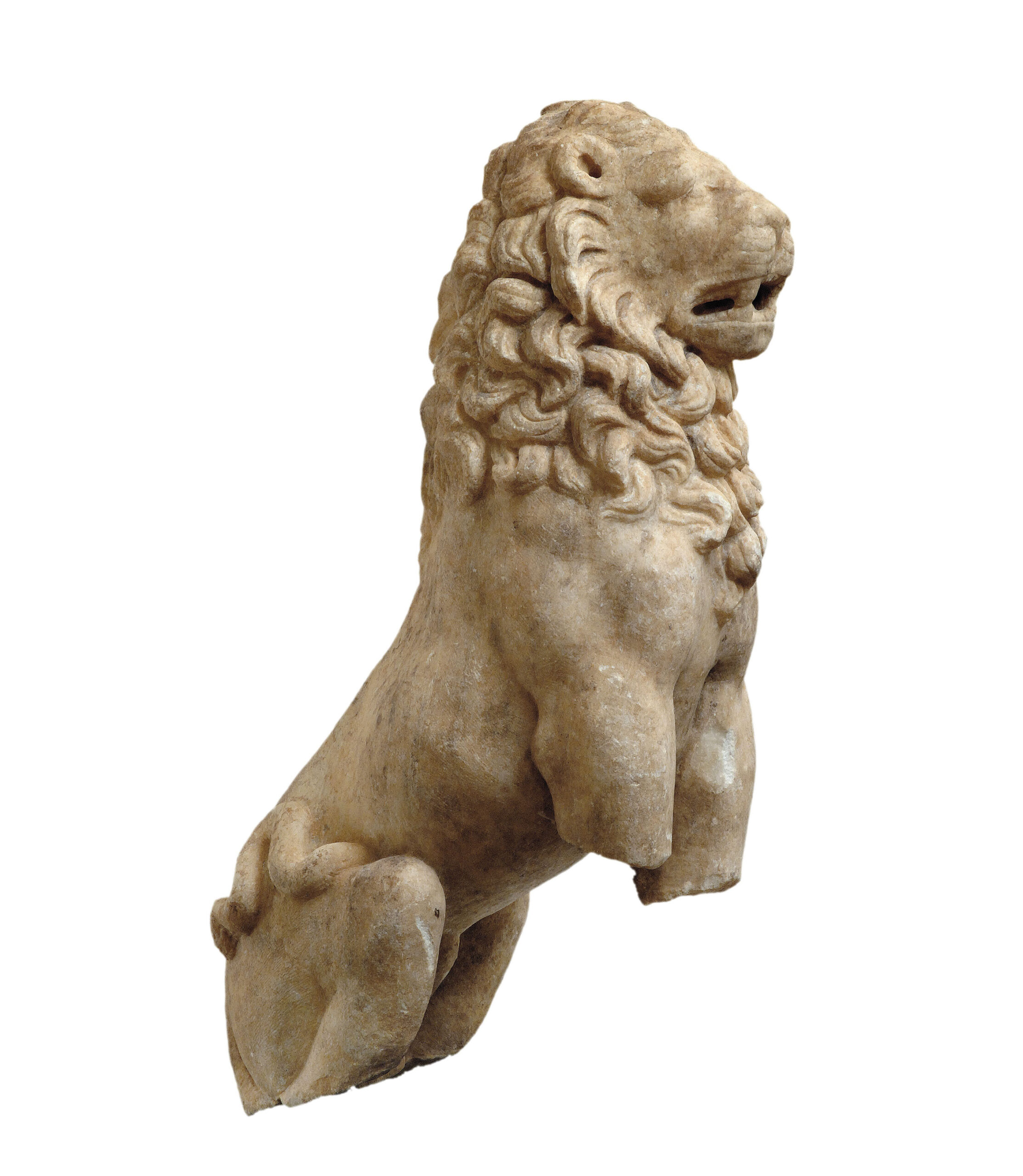

Lion from a grave monument
The lion sits on his haunches and looks straight ahead, with mouth half open, evidently portrayed as growling. Anatomical details of the head have been realistically rendered. The eyes are small and fairly deeply set, the nose flat and wide. The slender, supple body and the swelling of the chest and leg muscles suggest tension. The rich mane has dense, thick, unruly curls, that were divided from each other by means of a drill. They cover the head, the upper part of the spine, the neck and the upper part of the chest. A crest of curls runs down the spinal ridge. The curls are rendered without the sharp tips that are usual on the Attic lions of the 4th century B.C. The long tail runs under the right hind leg and in snake-like curves ends in a tuft over the right haunch.
Lions seated on their haunches are frequently found in ancient art. Most, however, have their head turned to the left, unlike that of the Canellopoulos Museum with its strict frontal pose resembling the Lion of Amphipolis. All the lions, except for the Perachora figure, are similar to the lion of the Canellopoulos Museum in the anatomical rendering of the body. The lion of Amphipolis has a similar arrangement of the crest of the mane on head and throat. The form of the tail is comparable to that on a lion of the first half of the 4th century B.C. in the British Museum. The Canellopoulos lion will have been set over a grave, probably that of some gallant warrior, as a symbol of his heroic death.
PUBLICATION
Choremi-Spetsieri Α. 2006. Cat. no. 102, in Choremi-Spetsieri Α. – Zarkadas Α. (eds), The Paul and Alexandra Canellopoulos Museum. Ancient Art, Athens, 168-169.
